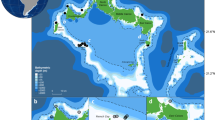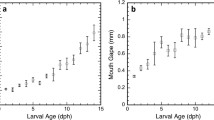Abstract.
Narcomedusae are the most common group of medusae in the mesopelagic depths of Monterey Bay, California. Numerous capture events of various prey taxa were recorded in situ and analyzed using the Monterey Bay Aquarium Research Institute's remotely operated vehicle "Ventana". In situ video analysis of the stomach contents of 82 Solmissus incisa and S. marshalli revealed 88 identifiable prey items. Most (88%) were gelatinous animals. Of these gelatinous prey, 60.3% were ctenophores, 20.5% were cnidarians, 12.8% were salps, 3.8% were chaetognaths, and 2.6% were polychaetes. Euphausiids accounted for 11.4% of the diet, but they were probably captured adventitiously, as the gut contents of ctenophore prey. The tentacle-first foraging behavior of the narcomedusae is an effective way to capture large, comparatively fast-moving prey, because the fluid disturbance caused by swimming is decoupled from the area of prey capture. This behavior contrasts with the prevailing models of feeding behavior in medusae. Stealth predation may be the dominant mode of capturing prey by medusae in the mesopelagic depths of the oceans.
Similar content being viewed by others
Author information
Authors and Affiliations
Additional information
Electronic Publication
Rights and permissions
About this article
Cite this article
Raskoff, .K. Foraging, prey capture, and gut contents of the mesopelagic narcomedusa Solmissus spp. (Cnidaria: Hydrozoa). Marine Biology 141, 1099–1107 (2002). https://doi.org/10.1007/s00227-002-0912-8
Received:
Accepted:
Issue Date:
DOI: https://doi.org/10.1007/s00227-002-0912-8




